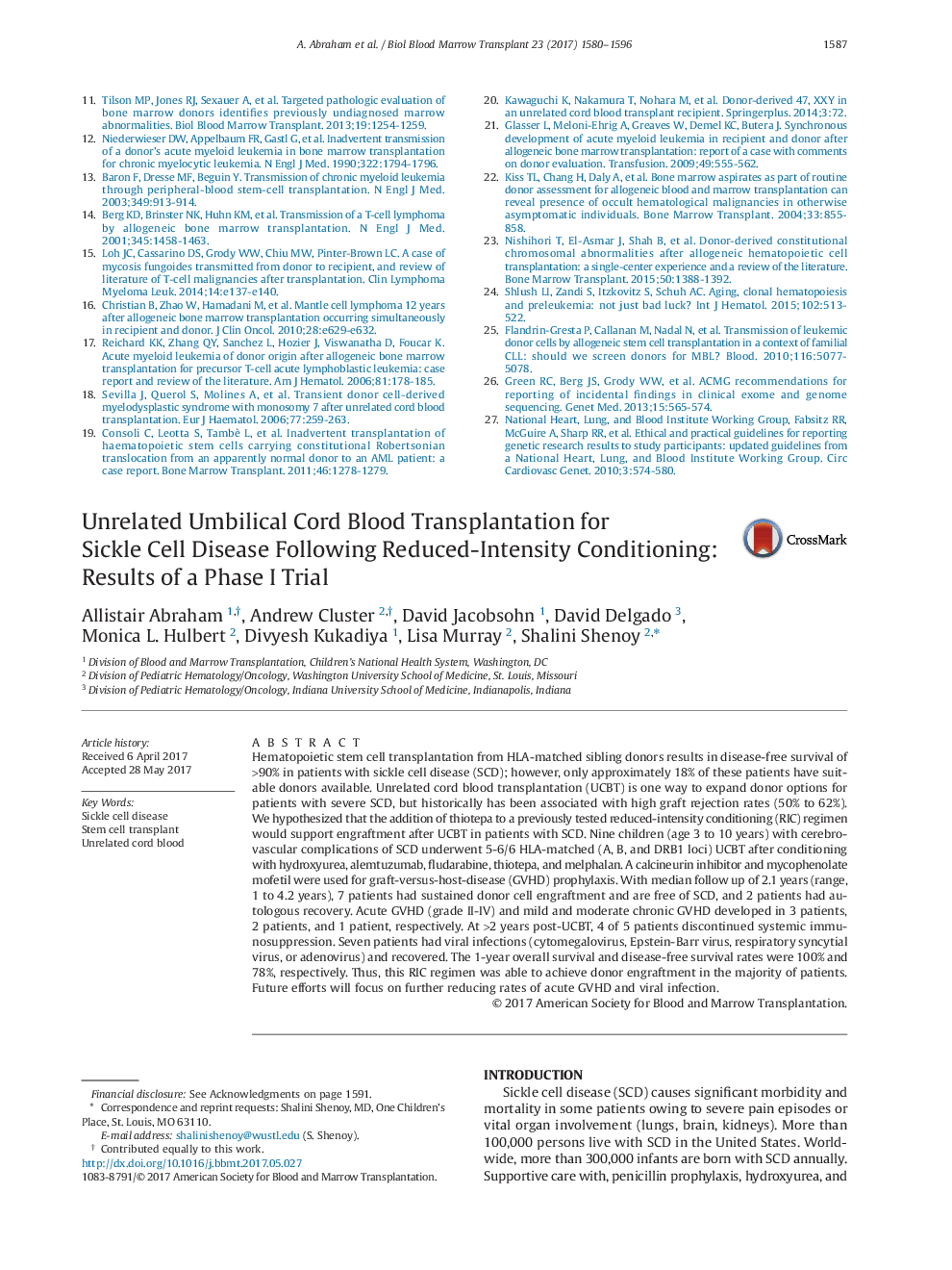| کد مقاله | کد نشریه | سال انتشار | مقاله انگلیسی | نسخه تمام متن |
|---|---|---|---|---|
| 5524395 | 1546237 | 2017 | 6 صفحه PDF | دانلود رایگان |

- Children with severe sickle cell disease can be cured by unrelated donor umbilical cord blood transplantation.
- Reduced intensity conditioning using hydroxyurea, alemtuzumab, fludarabine, thiotepa, and melphalan is sufficient to achieve full donor engraftment in the majority of children with sickle cell disease.
- Chronic graft-versus-host disease incidence and severity is low when unrelated umbilical cord blood is used as the stem cell source.
Hematopoietic stem cell transplantation from HLA-matched sibling donors results in disease-free survival of >90% in patients with sickle cell disease (SCD); however, only approximately 18% of these patients have suitable donors available. Unrelated cord blood transplantation (UCBT) is one way to expand donor options for patients with severe SCD, but historically has been associated with high graft rejection rates (50% to 62%). We hypothesized that the addition of thiotepa to a previously tested reduced-intensity conditioning (RIC) regimen would support engraftment after UCBT in patients with SCD. Nine children (age 3 to 10 years) with cerebrovascular complications of SCD underwent 5-6/6 HLA-matched (A, B, and DRB1 loci) UCBT after conditioning with hydroxyurea, alemtuzumab, fludarabine, thiotepa, and melphalan. A calcineurin inhibitor and mycophenolate mofetil were used for graft-versus-host-disease (GVHD) prophylaxis. With median follow up of 2.1 years (range, 1 to 4.2 years), 7 patients had sustained donor cell engraftment and are free of SCD, and 2 patients had autologous recovery. Acute GVHD (grade II-IV) and mild and moderate chronic GVHD developed in 3 patients, 2 patients, and 1 patient, respectively. At >2 years post-UCBT, 4 of 5 patients discontinued systemic immunosuppression. Seven patients had viral infections (cytomegalovirus, Epstein-Barr virus, respiratory syncytial virus, or adenovirus) and recovered. The 1-year overall survival and disease-free survival rates were 100% and 78%, respectively. Thus, this RIC regimen was able to achieve donor engraftment in the majority of patients. Future efforts will focus on further reducing rates of acute GVHD and viral infection.
Journal: Biology of Blood and Marrow Transplantation - Volume 23, Issue 9, September 2017, Pages 1587-1592